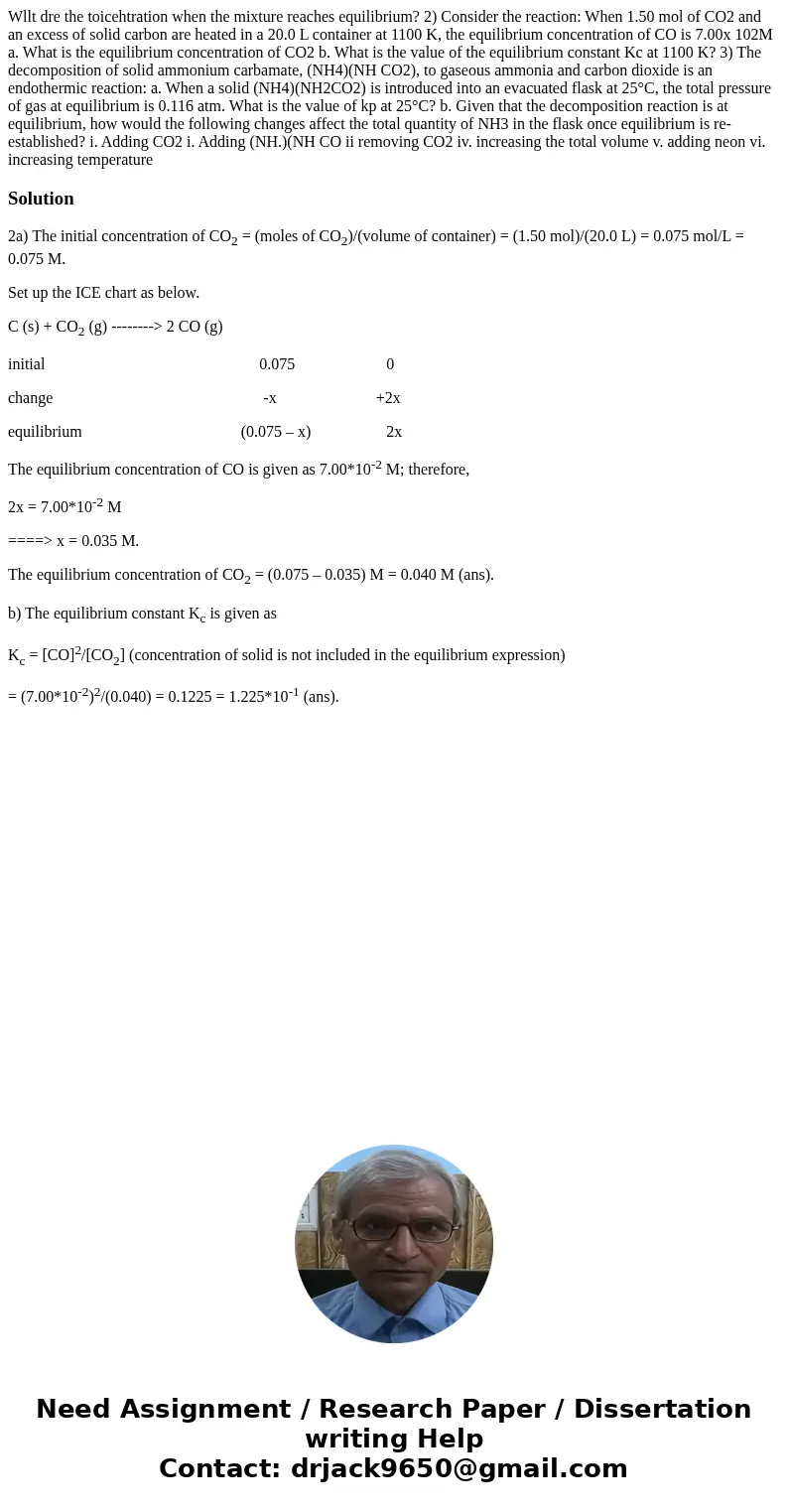Wllt dre the toicehtration when the mixture reaches equilibrium? 2) Consider the reaction: When 1.50 mol of CO2 and an excess of solid carbon are heated in a 20.0 L container at 1100 K, the equilibrium concentration of CO is 7.00x 102M a. What is the equilibrium concentration of CO2 b. What is the value of the equilibrium constant Kc at 1100 K? 3) The decomposition of solid ammonium carbamate, (NH4)(NH CO2), to gaseous ammonia and carbon dioxide is an endothermic reaction: a. When a solid (NH4)(NH2CO2) is introduced into an evacuated flask at 25°C, the total pressure of gas at equilibrium is 0.116 atm. What is the value of kp at 25°C? b. Given that the decomposition reaction is at equilibrium, how would the following changes affect the total quantity of NH3 in the flask once equilibrium is re-established? i. Adding CO2 i. Adding (NH.)(NH CO ii removing CO2 iv. increasing the total volume v. adding neon vi. increasing temperature
2a) The initial concentration of CO2 = (moles of CO2)/(volume of container) = (1.50 mol)/(20.0 L) = 0.075 mol/L = 0.075 M.
Set up the ICE chart as below.
C (s) + CO2 (g) --------> 2 CO (g)
initial 0.075 0
change -x +2x
equilibrium (0.075 – x) 2x
The equilibrium concentration of CO is given as 7.00*10-2 M; therefore,
2x = 7.00*10-2 M
====> x = 0.035 M.
The equilibrium concentration of CO2 = (0.075 – 0.035) M = 0.040 M (ans).
b) The equilibrium constant Kc is given as
Kc = [CO]2/[CO2] (concentration of solid is not included in the equilibrium expression)
= (7.00*10-2)2/(0.040) = 0.1225 = 1.225*10-1 (ans).

 Homework Sourse
Homework Sourse